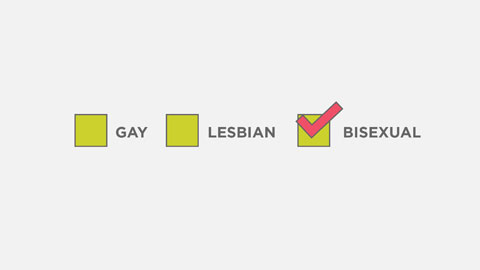How does someone know if they are bisexual?

Many people are confused about the term bisexual and wrongly assume it is a transitional phase to becoming gay or lesbian. Bisexuality is not a phase. It is a unique sexual orientation, spanning a variety of different characteristics.
People who are bisexual can experience romantic and/or sexual attraction to people of more than one sex and/or gender, not necessarily equally or at the same time, in the same way, or to the same degree.
But not everyone who experiences bisexual attraction or engages in bisexual behavior self-identifies as bisexual. Self-identification is the way people refer to themselves, either privately or publicly. People who self-identify as bisexual believe that bisexuality best defines their sexual identity. It feels true to who they are.
Approximately 3.1% of adults in the U.S. identify as bisexual according to Gallup (Jones, 2021). There are distinct generational differences, however, with 11.5% of Gen Z adults in the U.S. saying that they are bisexual, as compared with 5.1% of Millenials, 1.8% of Gen X adults, and just .3% of Baby Boomers (Jones, 2021).
There are studies reflecting a higher percentage of the adult population that report some measure of bisexual attraction and/or behavior across their lifetime. In her Ted Talk, Dr. Tania Israel cites statistics suggesting that the percentage of U.S. adults who report a degree of bisexual behavior ranges from 8-37%, while those experiencing bisexual attraction ranges from 17-46% (Israel, 2015) .
Why is there such a difference in these percentages?
Consider the following profiles—are they gay, straight or bisexual?
- John is in a monogamous relationship with Sue, married with children. He has had a previous relationship (before Sue) with a man. He identifies as bisexual.
- Ann is in a monogamous relationship with Ellen. She has had previous relationships with men. She identifies as lesbian.
- Phil is in a monogamous relationship with Ben. Phil was called “Amy” at birth based on genitalia. Before Amy transitioned to Phil, Amy had, at different times, relationships with men and women. Phil identifies as a gay transgender man.
Maybe all could be viewed as bisexual since at some time in their lives they experienced a relationship with a man and, separately, a relationship with a woman. But only John identifies as bisexual.
What causes this gap between attraction and self-identification? Several factors, including a lack of acceptance and understanding in both the straight and gay communities, particularly for older generations.
Both gay and straight communities have historically demonstrated less understanding and acceptance of bisexuality as a unique identity. This lack of understanding has tended to keep bisexuals in the closet, contributing to the phenomena of bisexual erasure, meaning the tendency to question, ignore, or outright deny the existence and legitimacy of bisexuality. Benoit Denizet-Lewis writes in a recent New York Times Magazine article:
“Studies have found that straight-identified people have more negative attitudes about bisexuals (especially bisexual men) than they do about gays and lesbians, but American Institute of Bisexuality board members insist that some of the worst discrimination and minimization comes from the gay community (Denizet-Lewis, 2014, para. 17).”
This lack of acceptance and understanding, especially targeted at bisexual men, may also contribute to women more readily coming out and identifying as bisexual versus men, with 4.3% of U.S. women identifying as bisexual, as compared with 1.8% of men (Jones, 2021).
Given the long history of denial and hostility toward bisexuality, recent trends point to a sea change in attitudes. In fact, a significant majority (72 %) of Gen Z adults who identify as LGBTQ+ say that they are bisexual, a striking increase over prior generations. This shift translates into 11.5% ofall U.S. Gen Z adults identifying as bisexual--a percentage that begins to approach the higher estimates of bisexual attraction and behavior as cited above (Jones, 2021).
The generational shift has been accompanied by conceptual differences and some changes in terminology. Whereas earlier generations of bisexual persons might have defined their sexuality as encompassing attraction to both men and women, young people are more likely to take a broader approach, saying that they have the potential to be attracted to persons of more than one gender or regardless of gender. This allows for attraction to persons with non-binary identities, such as queer or agender.
Some people prefer the term pansexual because it feels truer to their non-binary understanding of their sexuality, while others continue to use the term bisexual but understand it in an inclusive way.
Featured Content
Check out the most recent data from Gallup on LGBT identities among U.S. adults, including bisexuality.
LGBT Identification Rises to 5.6% in Latest U.S. Estimate
Read a cbs.com article about recent research on bisexuality among women.
References:
Copen, C.E., Chandra, A., & Febo-Vazquez, I. (2016, January 7). National health statistics report: Sexual behavior, sexual attraction, and sexual orientation among adults aged 18–44 in the United States: Data from the 2011–2013 National Survey of Family Growth (Report No. 88). Centers for Disease Control and Prevention. http://i2.cdn.turner.com/cnn/2016/images/01/06/nhsr88.pdf
Denizet-Lewis, B. (2014, March 23). The scientific quest to prove bisexuality exists. New York Times Magazine. https://www.nytimes.com/2014/03/23/magazine/the-scientific-quest-to-prove-bisexuality-exists.html
Diamond, L. (2008). Female bisexuality from adolescence to adulthood: Resulting from a 10-year longitudinal study. Developmental Psychology, 44 (1), 5-14. https://pubmed.ncbi.nlm.nih.gov/18194000/
Dotinga, R. (2016, January 8). More women report having same-sex relationships. CBS News. http://www.cbsnews.com/news/more-women-report-same-sex-relationships
Gates, G.J. (2011). How many people are lesbian, gay, bisexual, and transgender? Williams Institute, UCLA School of Law. https://williamsinstitute.law.ucla.edu/publications/how-many-people-lgbt/
Jones, Jeffrey M. (2019). LGBT Identification Rises to 5.6% in Latest U.S. Estimate. Gallup. https://news.gallup.com/poll/329708/lgbt-identification-rises-latest-estimate.aspx
